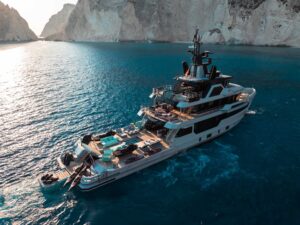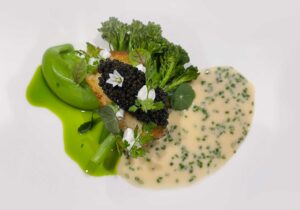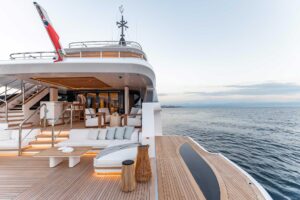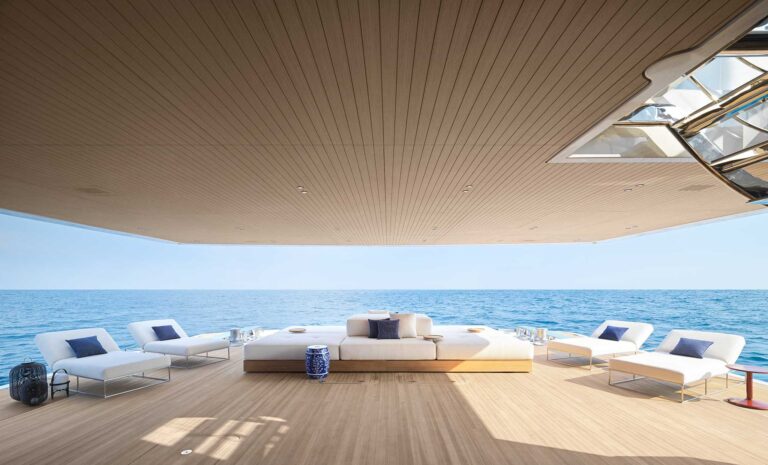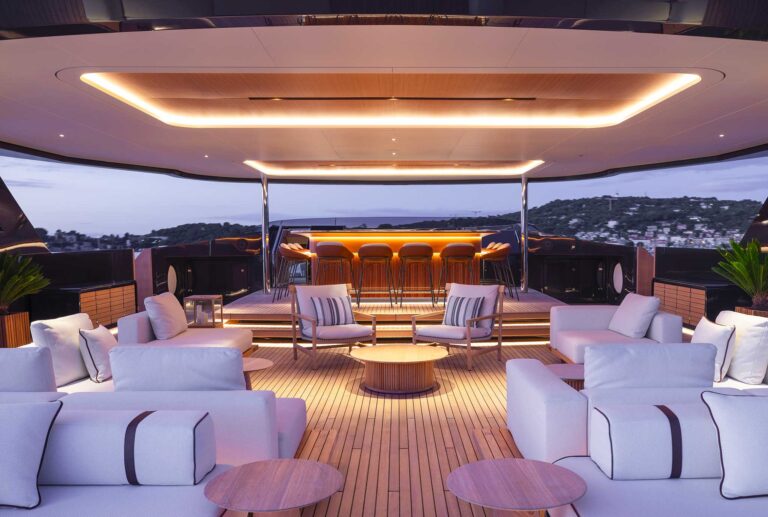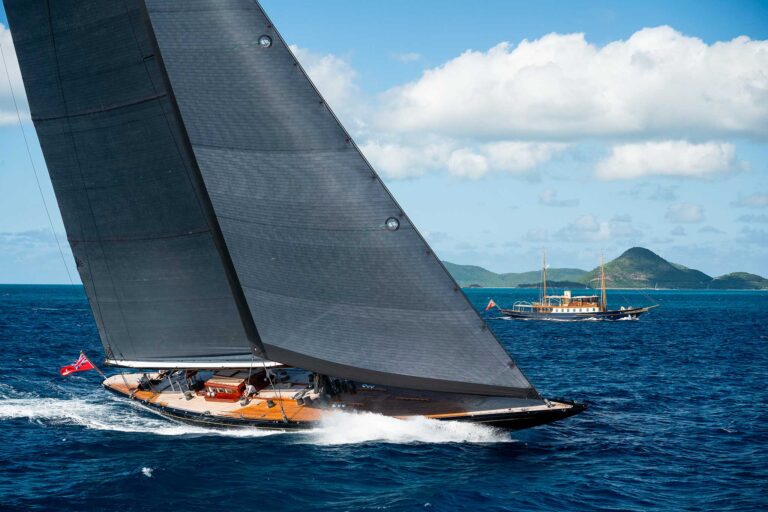Swimming with humpback whales is a humbling experience, and no amount of dreaming has prepared me for the real deal.
“Humpback calves may be babies, but don’t forget, it’s like playing in the waves with a Ford,” EYOS expedition officer Ben Lyons warns as we slip into the warm waters of French Polynesia. We approach the mother and baby as a group, to avoid spooking the mother, and then, we wait to see what happens while she sleeps below us.

The 20-foot-long, 1-ton baby starts to frolic near the surface. It breaches, slaps its tail and barrel rolls inches from my face. I feel a whoosh of water wash over my body. The power and strength are undeniable compared to my own smallness and sense of awe. The baby takes a deep dive before resurfacing, with its dorsal fin visible and pectoral flippers splashing.
And then, the 40-foot-long mother wakes from her sleep, and is on the move toward us with alarming speed.

This is the kind of bucket-list experience that EYOS Expeditions has become known for in the yachting community. The company works with yacht owners and charter companies to create expedition itineraries in remote locations pretty much anywhere, including Antarctica, Costa Rica and Norway. On this day, the itinerary is part of a charter aboard the 156-foot (47.7-meter) Fassmer Hanse Explorer in the South Pacific, where the visual drama of volcanic, emerald peaks rising abruptly from the ocean is just as arresting as that moment in the water with the whales.

The region’s wildlife-rich waters are home to more than 20 species of sharks, including tiger, lemon and thresher, drawn by the archipelago’s exceptionally healthy coral reefs. And, at this time of year—November—the humpbacks are here with their calves. The adults arrive every August, after making long migration from the frigid waters of Antarctica to the warmer breeding grounds.
And, I soon learn, they do protect their young. I watch as the mother whale slides in between our group and her baby, guiding the calf onward. I silently wish them both well as we head back to the boat with smiles all around, just in time to see spinnaker dolphins swim in our wake.

Hanse Explorer is an ideal type of yacht for a remote trek into the tropics, one of only two in the world where EYOS staff form part of every charter. It was originally built as a Sea Cadet training vessel, has an ice-class hull and allows an 8,000-nautical-mile range. A 2022 refit saw it outfitted with retractable fin stabilizers and a lower deck dive center that has gear for 14 divers, a Bauer nitrox membrane compressor and a mud room where guests prepare and return to after dives.
That kind of do-anything outfitting is paired with highly civilized cruising. Stepping aboard the yacht, sliding glass doors from German studio Miescke Design fill the main salon with light and sense of space. On the upper deck, a cabana-style seating and lounge area doubles as a private terrace for the revamped master stateroom. It’s from here where I catch sight of the Hawaiki Nui Va’a, the toughest outrigger canoe race known to humanity. The annual three-day festival sees teams of broad-backed Ma’ohi race the 80-mile trip from Huahine to Raiatea and Taha’a with a finish in Bora Bora.

A warm sea breeze carries the sweet scent of vanilla, a calling card for the island of Taha’a, which we’re anchored near. It forms part of the Society Islands chain, which includes the well-known islands of Tahiti, Mo’orea and Bora Bora. Taha’a is less developed, with jungle-swathed shores where the wild vanilla orchid grows in abundance.
One morning, we take Hanse Explorer’s Zodiacs in search of the perfect dive spot. The Ceran Pass is renowned for prolific marine life, including gray sharks, barracuda and trevallies. Our dive guide, Yannis Saint Pé of Tahiti Dive Management, points to what feels like an arbitrary location on the water where we stop, ready our scuba gear and backroll over the side.
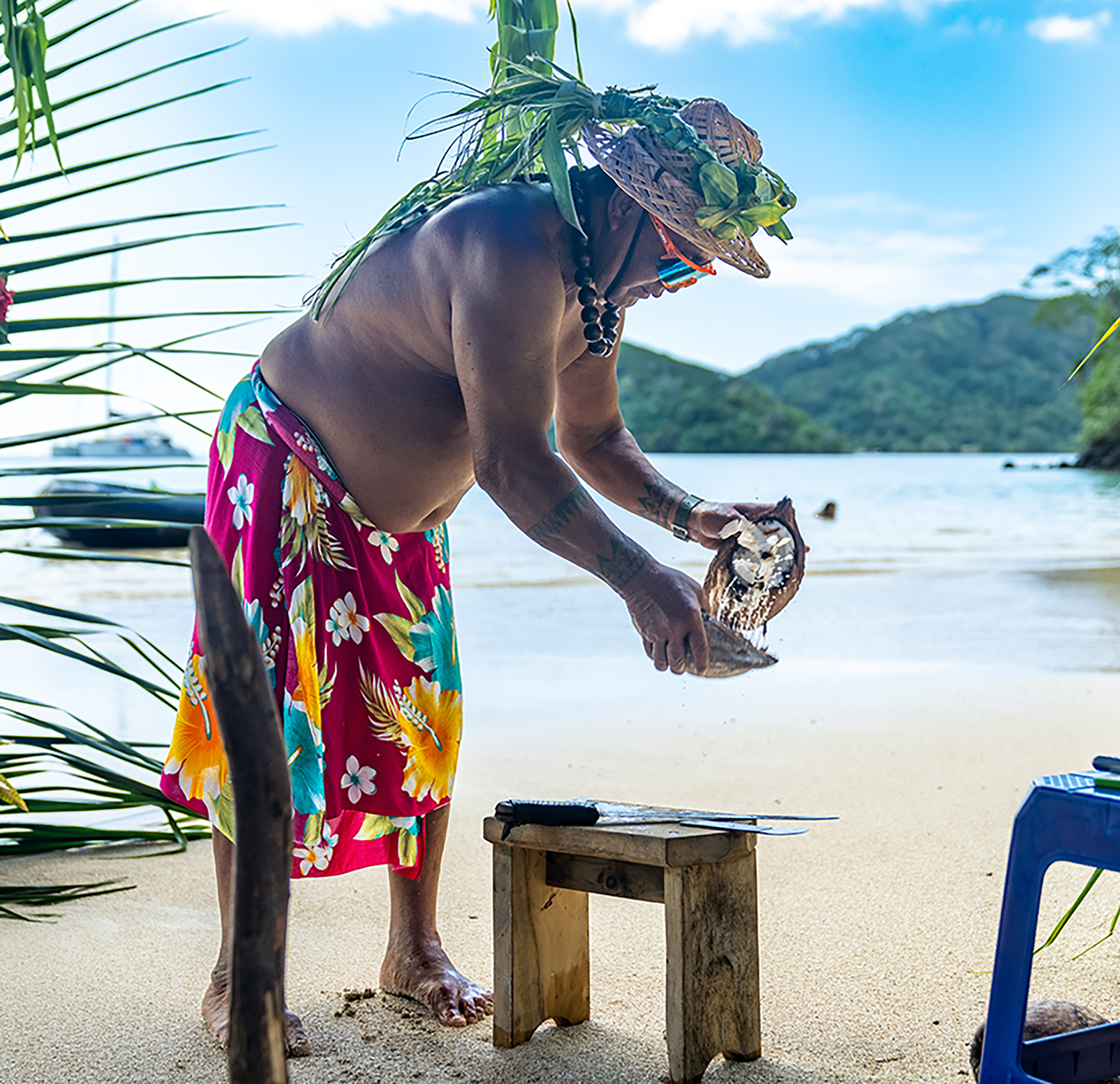
But arbitrary, it is not. He has more than 30 years of local knowledge in these waters. We descend 60 feet amid a swarming ballet of lionfish, moray eels and triggerfish. Giant sea cucumbers litter the seabed. Vibrant yellow corals bristle with life. The current carries me along in water that’s a balmy 78 degrees, so warm that I don’t notice the passing of time.
And then, we’re back in the Zodiac, being whisked to the mothership, where we step into the steaming hot sauna as a post-dive treat.

Ravenous from the morning’s activities, we dine grandly on freshly baked breads, sweet crab meat, homemade arancini and a rainbow of exotic fruits before returning to the Zodiacs to search for rays. EYOS expedition leader Ian Strachan alerts us to the dark, flat bodies of stingrays and spotted eagle rays, easy to discern in the electric blue shallows. With the peaks of Bora Bora standing proudly in the distance, I find myself back in the water with a mask and snorkel. I’m drifting again, this time in a rapid current that runs between two islets. I rush past pufferfish and pink-fringed giant clams, with the telltale beaks of parrotfish glinting.
Our next port of call, the island of Huahine, is home to a thriving fishing community. Green lobster is served as fresh catch of the day, rolled in a banana leaf and left to cook gently in a Tahitian oven. Huahine’s gin-clear lagoon is edged with mushroom coral, saltwater trees and stilt houses where laughing children play on homemade swings.

With Hanse just outside the bay, we approach the site of our afternoon barbecue on Hanai Iti beach by tender, serenaded by the low bass horn of our host’s conch shell blowing and the sweet melody of a Tahitian ukulele. Maeva, the host calls out, welcoming us ashore.
Later, back aboard Hanse, we cruise toward Tahiti and its neighboring island of Mo’orea. We anchor in Cook’s Bay, a dramatic, shoe-shaped cove named after British explorer Capt. James Cook, who first voyaged to Polynesia in 1769. Cloud-covered peaks with tall falcata trees bleed into the water’s edge. We dive the Opunohu canyons with blacktip sharks and shoals of snapper. Then drive into the winding hills to hike amid the banyan trees and vivid pink frangipani. We’re shaded by the canopy of buttress trees, strangler figs and pandanus. It feels wild and tropical at an elevation of 1,200 feet, where our efforts are rewarded with sprawling ocean vistas, a cooling sea breeze and, afterward, a soak in Hanse’s sundeck hot tub.

I lean over the side of the expedition yacht to glimpse the underwater silhouette of a large green turtle. To my left, the soft white sands of Mo’orea beckon. To my right, the vast Pacific stretches out before me. Paradise.
Our 10-nautical-mile homeward bound cruise from Mo’orea to Tahiti pales into insignificance compared to the eight-week return journey the humpbacks have ahead of them, en route back to Antarctica. Hanse is expected to join them for charters there during the winter season before relocating to Greenland and the Canadian Arctic, offering brave new adventures for thrill-seeking guests.
For more information: eyos-expeditions.com
This article was originally published in the Spring 2023 issue.


